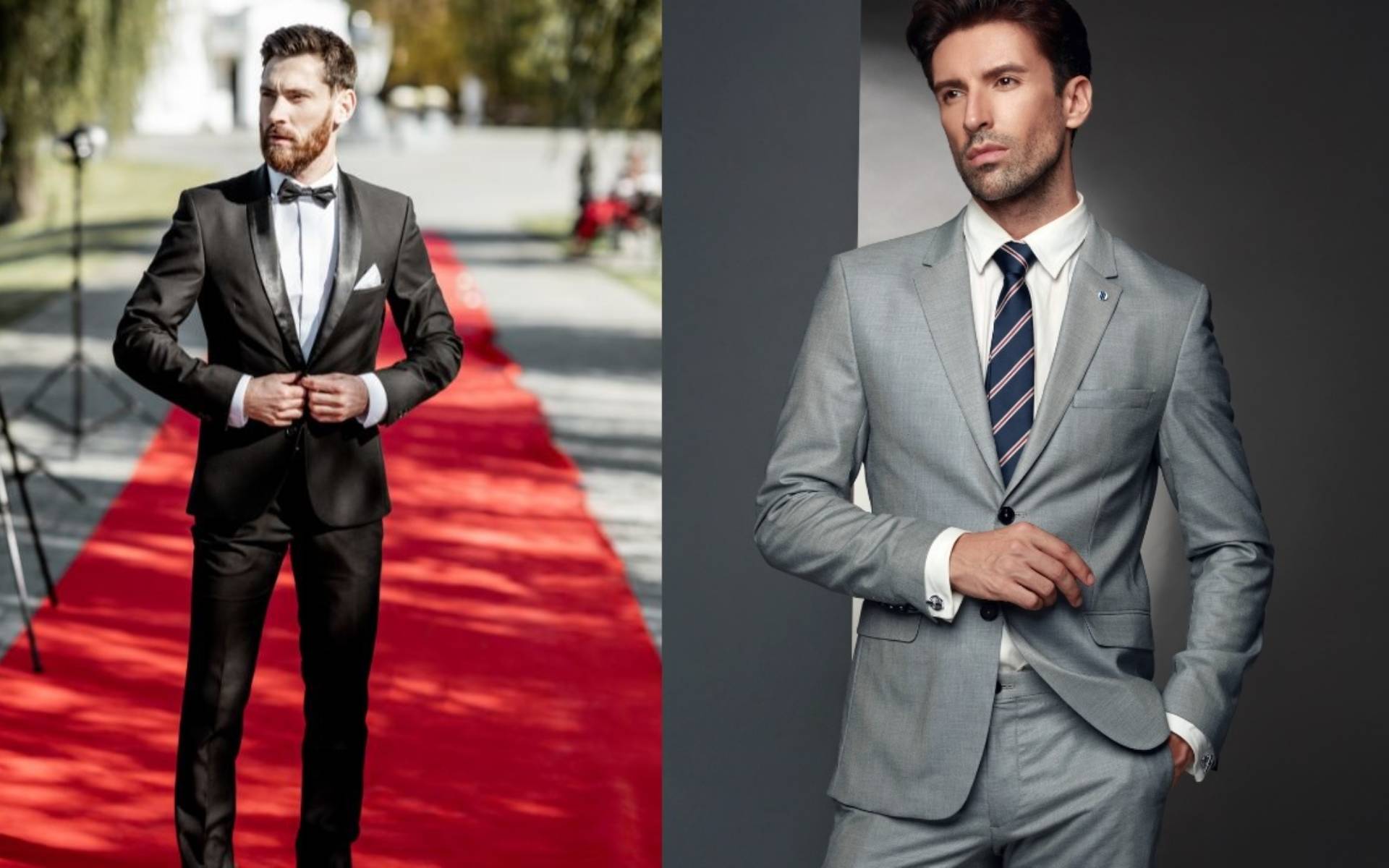Suits and tuxedos are quintessential elements of a formal wardrobe. They epitomise sophistication and confidence like no other, giving an irresistible appeal to your persona. These sartorial pieces are a timeless choice for ceremonies, corporate events, weddings, galas, and more. Though both carry a formal vibe and may seem similar, there is more than what meets the eye. In this blog, we have listed the dissimilarities between a suit and a tuxedo for your reference.
Tuxedo vs Suit Differences
Tuxedos possess a higher degree of formalness than tailored suits because of their intricate detailing. On the flip side, the classic aesthetics decked with a casual look of suits remain unmatched. Let us delve deeper and know more about the differences between them.
Incorporation of Satin Fabric: One of the most prominent differences between a suit and a tuxedo is the existence of satin fabric. The traditional tuxedos comprise a satin facing on the pocket trim, lapels, and buttons. There is a satin-induced side stripe gliding down the trousers' leg. On the contrary, suits do not incorporate satin fabric. Instead, they have plastic buttons or self-buttons concealed with a similar fabric as the coat.
However, the modern designs of the tuxedos have given a twist to the classic design by including thinner satin trims on the lapels and down the trouser leg. Indeed, satin is what makes the difference between the two garments, giving tuxedos their sleek look and shine.
Occasion and Complementing Accessories: The tuxedos are more of an evening-wear piece of clothing, while the suits are meant for day-to-day use. Though both are essential components of a formal wardrobe, tuxedoes are more suited for momentous occasions. In contrast, suits are more appropriate for work or business meetings. With a tuxedo, you can wear a white shirt and a black tailcoat. The most important accessory for a tuxedo is the cummerbund. If you are donning a tuxedo for a wedding, ensure to add a black bow tie for added dapperness to your look.
For a suit, you only need a white shirt, black tie, black trousers, and a pocket square for a formal-chic appearance.
Noticeable Detailing: A tuxedo has tails, usually tied and fastened with a bow at the back. It has lapels on the front and back, made from black cloth, white piping, and other decorations. A bespoke suit usually has two or three buttons on the front and two or three buttons on the sleeves. Likewise, the trousers are typically pleated but can also be flat-fronted or tapered at either side for comfort or style.
Exceptions to Classic Conventional Tuxedos
Though satin fabric plays a defining role in the appearance of a suit and a tuxedo, there are a few traditional and contemporary tuxedo designs without satin. These formal tuxedos are often referred to as the white dinner jacket or a tropical black tie. Generally, men accompany it with a white turn-down collared shirt, black trousers, and black accessories. This type of tuxedo contains only one button at the front, self-shawl lapels, and self-flap pockets. Nevertheless, the black, heather grey, and steel grey tuxedo have satin fabric, whereas the slate blue and tan tuxedos do not.
The Final Words
While the tuxedo has long been associated with black tie events, the suit is traditionally associated with business attire. Both of them reign supreme when it comes to flaunting your best fashion. A suit is an unmistakable choice for corporate events, and tuxedos are made for commemorating special events.
